Total Weight:
40.1 lbs (18.18 kg)
Battery Weight:
2.86 lbs (1.29 kg)
Motor Weight:
4.62 lbs (2.09 kg)
Frame Material:
SmartForm C3 Aluminum Alloy
Frame Sizes:
17.75 in (45.08 cm)19 in (48.26 cm)Geometry Measurements:
17.75" Seat Tube Length, 21.5" Reach, 20.5" Stand Over, 35" Minimum Saddle Height, 29.5" Width, 70.25" Length, 42.25" Wheelbase
Frame Types:
Mid-Step
Frame Colors:
Gloss Black
Frame Fork Details:
SmartForm C3 Rigid Aluminum Alloy, OutFront Offset, 100mm Hub Spacing, 10mm Axle with 5mm Hex Bolt
Frame Rear Details:
135mm Hub Spacing, 12mm Axle with 10mm Flats Secured By 8mm Hex Bolts with Flats
Attachment Points:
Bottle Cage Mount, Front Rack Mount, Fender Mounts
Gearing Details:
9
Speed 1x9 11-36 Tooth Cassette, Shimano Alivio DerailleurShifter Details:
Shimano Acera Trigger Shifters with Optical Gear Display on Right (One-Way High, Three-Shift Low)
Cranks:
Prowheel Zephyr, Forged Aluminum Alloy, 170mm Length, 38 Tooth Steel Chainring with Aluminum Alloy Guide
Pedals:
Cannondale Comfort, Plastic Platform with Small Nubs and Grip Tape Strip
Headset:
FSA, Ahead, Semi-Integrated, Straight 1-1/ 8"
Stem:
Cannondale 3 Intellimount with High Direct Light Mount, Aluminum Alloy, 11° Rise, 80mm Length, 31.8mm Clamp Diameter, One 15mm Spacer, Three 5mm Spacers
Handlebar:
Cannondale Cruise Control Riser, 6061 Aluminum Alloy, 31.8mm Clamp, 15-Degree Backsweep, 740mm Width
Brake Details:
Tektro HD-R280, Hydraulic Disc with 160mm Rotors, Dual-Piston Calipers, Tektro Three-Finger Levers with Adjustable Reach
Grips:
Cannondale Comfort, Semi-Ergonomic, Ribbed Rubber, Non-Locking
Saddle:
Cannondale Treadwell, Fabric Material, Integrated Handle, 170mm Width, Steel Rails
Seat Post:
Promax Suspension, Aluminum Alloy, (40mm Travel)
Seat Post Length:
350 mm
Seat Post Diameter:
31.6 mm
Rims:
Shining, Aluminum Alloy, Double Wall, 32 Hole
Spokes:
Stainless Steel, 14 Gauge, Black with Nipples
Tire Brand:
Maxxis DTR-1, 650x47b (47-584)
Wheel Sizes:
27.5 in (69.85cm)Tire Details:
35 to 65 PSI, 2.4 to 4.5 BAR
Tube Details:
Presta Valve
Accessories:
Brushed Aluminum Alloy Fenders with Plastic Ends (55mm Width), Mid-Frame Adjustable Length Kickstand, Front Basket Rack with Bamboo Deck (10kg 22lb Max Weight), Urban Armor Frame Bumpers (Rubber Strips on Sides of Top Tube), Clear Plastic Slap Guard Sticker, Herrmans H-Black MR8 Integrated Headlight (180 Lumens, Side Windows), Herrmans H-Trace Integrated Rear Light (Two LED)
Other:
Downtube-Integrated Battery Pack, MAHLE Ebikemotion X35 1.1lb 42 Volt 2.0 Amp Charger, KMC e9T Chain, Cannondale Branded Garmin Wireless Front Wheel Speed Sensor (Non-Rechargeable Coin Battery)



























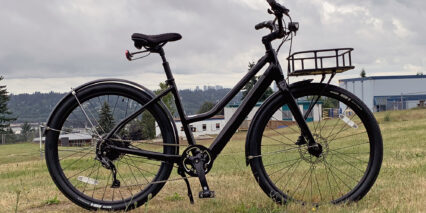

















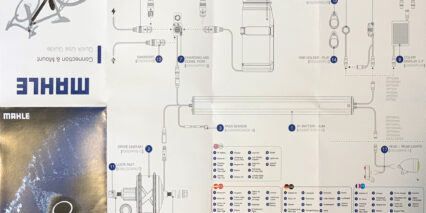

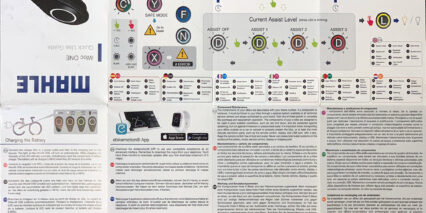
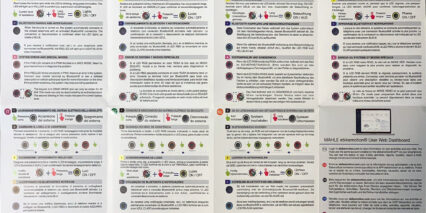





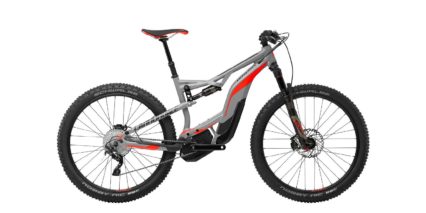


doug
4 years agoYou said “I guess it reduces clutter at the handlebars” in your review. I think that the sensor could be anywhere along the hydraulic brake lines.
ReplyCourt
4 years agoYeah, I think you’re correct about that Doug. However, most of the motor inhibitor sensors I have seen are incorporated into the brake levers and require a separate cable. Perhaps it’s less expensive this way? It might make bleeding the brakes a lot easier than if there was some sort of inline sensor. Maybe they could combine the two wires in a fatter wire? Lots of possibilities, but in general, motor inhibiting brake levers do clutter up the cockpit on ebikes I’ve seen.
ReplyDewey
4 years agoBRAIN report Cannondale is conducting a recall to replace the front rack on Treadwell models, the rack should be removed until Cannondale provide replacement hardware source here.
ReplyCourt
4 years agoNice find, Dewey! Thank you SO much for taking the time to provide a source and share this with us. Good to know for sure ;)
ReplyRT
4 years agoThis is in deed useful to know. But unfortunately not all dealers seem to be aware of this it would seem. My wife got this bike last week, and on first ride the basket attachment failed as described in the article, she came off the bike and now now has a broken arm that needed surgery. First ride. Not a great start to life with this bike.
Walter
4 years agoYou mentioned “won’t produce a lot of noise or any drag.” about the Mahle motor, but if you are peddling alongside another cyclist without electric support or coast downhill the drag is noticeable. When you take the wheel out and spin it while holding the axle you rally have to hold it tight. My local Evanscycles said that this is normal and it is not the bearings.
The fenders need adjusting regularly as they keep rattling on bumpy roads. Front rack has been recalled and no alternative is offered. I like my bike nonetheless.
ReplyCourt
4 years agoHi Walter! Thanks so much for sharing these real-world experiences with us. Perhaps there is something different about this hub motor that increases drag? Usually gearless motors freewheel without additional friction, so that’s where I was coming from… but I haven’t owned or tested as extensively as it sounds like you have. I’m so glad that you’re enjoying the bike, despite the little fender adjustments here and there. I really appreciate your comment!
ReplyBob H.
4 years agoWhile you mention that the iWoc One control interface feels “unfamiliar and unintuitive”, I think that’s a huge understatement. Frankly, it’s a terrible design. First, you have to take your hand off the handlebar, and your eyes off the road, to change assist levels. On the bumpy and hilly roads of Connecticut where I live, this is not only awkward, it’s unsafe. Second, assist levels can only be changed in one direction (i.e., low to medium to high to off). On my other e-bike which has a handlebar remote, I find myself frequently changing assist levels in both directions. Finally, it would have been so easy for Cannondale to correct this problem by installing the iWoc Trio on the handlebar. I’m trying to do that now, but unfortunately, it’s virtually impossible to find the Trio anywhere.
Don’t get me wrong, I think the Treadwell Neo is a beautiful e-bike, and most of your comments were spot on, but I think you should’ve been much more critical of the missing handlebar-mounted controller. I wouldn’t advise anyone to buy an e-bike that doesn’t have one.
ReplyCourt
4 years agoThanks for helping to fill in those details (about the iWoc Trio, and just how important a bar controller with up/down or +/- are). I know that my reviews can sometimes be too optimistic or positive when it comes to glaring misses. I try to be constructive, because I realize that each person has a different use case. I have my own perspectives, and I try to soften them as well. It really helps to hear individual voices in the comments, like you’ve done here, so thanks :)
ReplyAmy Steuer
2 years agoI bought a Treadwell Neo 2 Remixte in July. It seemed to be charging fine but the last couple of times I charged the bike to full, unplugged it and when I went to ride it 2 days later it only had half the charge or less. I took it to the local dealer and was told that it needed (and had) a firmware update. I took the bike home, rode it, charged it to full and 3 days later it is totally dead. Had anyone else experienced a battery charge issue? Thanks!
ReplyCourt
2 years agoHi Amy! Hope someone chimes in with a reply, or that you can get some help from Cannondale. Perhaps the smaller battery is sensitive to the cold fall weather? I know that this can impact range… sometimes halving it. Not being able to store the battery separately from the bike could present a challenge in keeping the pack at moderate temperatures. Perhaps you can try this for a day and see if your range is longer (though it will drop as you go outside into the cold as you ride). There are some neoprene covers on Amazon and elsewhere that are like battery jackets that can wrap around the frame, which could help to insulate it a bit.
ReplyJohn C
1 year agoWe just bought a Treadwell Neo EQ at our local bike shop. Love the bike, but we live in rural Vermont and wish it had more power on hills. What I don’t understand is that the motor does not seem to be putting out its full power when climbing a hill. I monitored it via the app, which gives real-time power, and the motor is using very little power when climbing. I am pedaling lightly, and the motor is at only 2-3 amps (72-108 Watts). This is at assist level 3, of course. But if I give it some more pedal power, the power of the motor increases. I have to pedal hard to get the power up to 250 Watts. I didn’t think that was how cadence sensors work. If there is a way to get the full 250 watts out of the motor with minimal pedaling, I haven’t figured it out.
It’s a nice bike, but somehow it does not seem to be designed for hills.
ReplyCourt
1 year agoThanks for the feedback, John. That’s also surprising to me. Usually there’s just a sensor measuring crank arm movement that says on/off for the motor power… then you adjust how much power by selecting an assist level. Perhaps there is some other torque sensor or something built in now, or maybe it has to do with the motor design being more efficient at higher wheel speeds (which you achieve by pedaling harder). I’m only guessing, but I’m glad that overall you are enjoying the bike :)
Reply